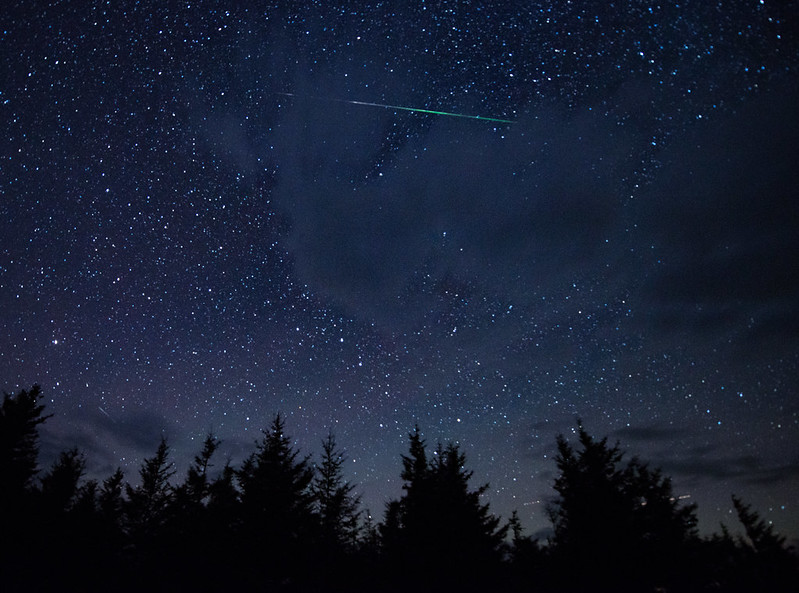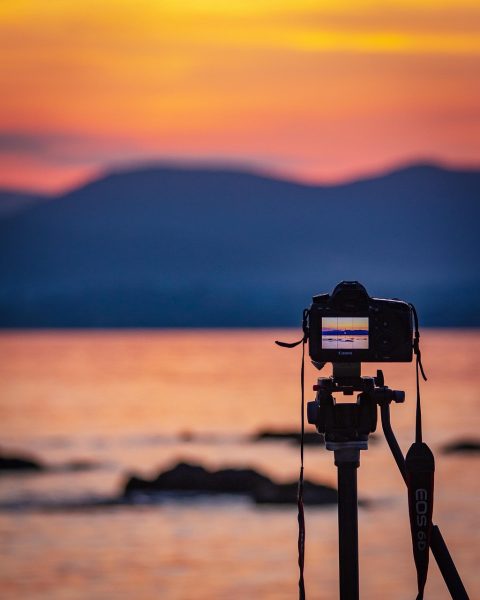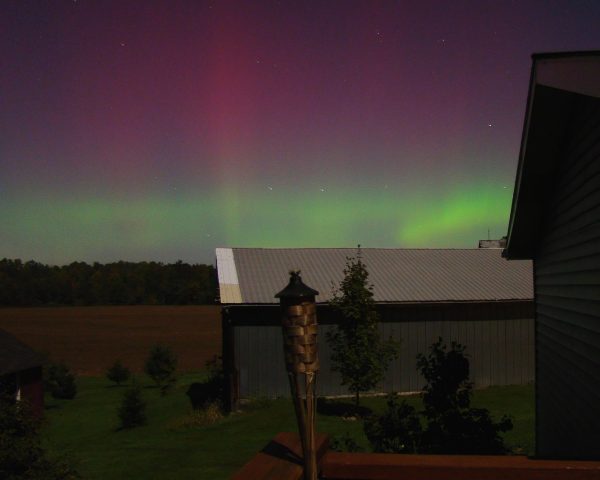Watch the Perseid meteor showers in August
A meteor flies across the sky in the 2015 Perseid meteor shower in West Virginia. The bright streak of light is the result of the meteor heating up when it enters the Earth’s atmosphere. (NASA/Bill Ingalls)
From the middle of July to the end of August 2022, the Perseid meteor showers will be visible at night in the northern hemisphere of the Earth.
Often regarded as one of the best meteor showers to watch, the shower will peak around August 11-13. As seen by its name, most of the meteors can be seen near the Perseus constellation.
The Perseid meteor shower has features that set it apart from others. It is one of the more abundant showers with around 50-100 meteors that can be seen per hour, as found by NASA.
Additionally, the Perseids frequently produce fireballs, which are meteors with a brightness comparable to the planet Venus. This is due to the fact that the meteors come from remnants of comet Swift-Tuttle. Swift-Tuttle’s nucleus is around 26 kilometers wide. In comparison, the average comet’s nucleus is about ten kilometers wide, according to Vanderbilt University. Because of the comet’s large size, the Perseids produce many fireballs.
Although the full moon during the peak time period may make the meteor shower less noticeable, the Perseids can still be enjoyed in a dark location unaffected by light pollution. State or national parks provide the clearest view of the night skies.
To gain the most worthwhile viewing experience, it is important to bring additional items. A telescope, binoculars, or a red light flashlight aid in seeing the meteor showers more clearly while snacks and a water bottle are essential to satiating hunger. Warmer clothing is also necessary in combating colder temperatures in the nighttime. Blankets or lawn chairs provide a comfortable area to watch the Perseids.
Your donation will support the student journalists of Hershey High School. Your contribution will allow us to purchase a new mirrorless digital camera and telephoto lens.
The camera we are working toward is the Sony a7 II Mirrorless Camera. It retails for about $1000 at B&H Photo and Video and comes with a kit lens, a 28-70mm. The lens is a big telephoto suitable for event and sports coverage, Sigma 70-200mm f/2.8 DG DN OS Sports Lens (Sony E). This lens retails for about $1500 at B&H Photo and Video.

Ashley Bu has been in The Broadcaster for three years, and she is currently the senior world editor. Besides working for the school newspaper, she enjoys...




